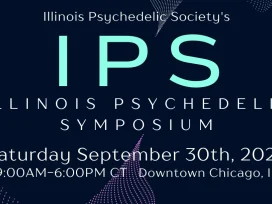
Blog

Eye Movement Desensitization and Reprocessing (EMDR) is a highly effective, evidence-based therapy used to treat a range of mental health conditions, including trauma, PTSD, anxiety, and depression.
EMDR therapy (Eye Movement Desensitization and Reprocessing) uses bilateral stimulation (BLS)—such as tapping, auditory tones, or eye movements—to help the brain desensitize triggers and reprocess distressing memories. This evidence-based approach is highly effective for treating trauma, PTSD, anxiety, and other mental health challenges.
Who can benefit from EMDR?
Originally developed for the treatment of psychological trauma, EMDR is a therapeutic modality which has grown extensively. Variations of the original evidence-based protocol have been developed for not just diagnoses like PTSD, but also:
- Depression
- Anxiety & Panic Attacks
- OCD
- Chronic Pain
- Addiction
- and more!
EMDR therapy can be effectively performed through telehealth or in-person sessions for both adults and children. This flexible approach makes trauma treatment and mental health support more accessible and convenient.
What's EMDR therapy like?
EMDR therapy involves eight phases which may not necessarily occur sequentially.
Your therapist will meet with you to explore why you're seeking therapy and identify associated "targets" -- isolated memories, thoughts, feelings, or sensations -- which will be used as focal points for desensitizing and reprocessing. For example, if a patient seeks to recovery from social anxiety, they may have the following targets:
- A memory of embarrassment from childhood
- A concern for public speaking in the future
- A memory of being bullied
- A reoccurring trigger of riding public transit
Typically targets fall into three categories: past memories, current triggers, future anxieties.
You and your therapist will identify skills and resources necessary for tolerating any potential distress associated with giving attention to the difficult targets. Like many forms of therapy, some discomfort at the beginning is customary, but you should always inform your therapist if it seems EMDR is making things unbearable. This is a sign that additional preparation work is necessary before continuing onward. As such, this phase may be revisited over time.
To assess progress over time, your therapist will ask you to identify and rate several items:
- A negative cognition: a thought that you at least partially believe about yourself related to the target;
- A positive cognition: a thought you would like to replace the negative cognition; this will be rated on the Validity of Cognition (VOC) Scale which assesses how true the positive cognition feels to you throughout the course of EMDR treatment.
- A rating of Subjective Unites of Distress (SUD) Scale: this measures how much distress the target currently causes you to think about.
During the desensitizing phase, you are asked to think of a still-frame or short mental reel of your target memory, thought, or situation while your therapist applies BLS in the form of tapping your hands, providing a pace for you to administer your own tapping, playing binaural sounds, or moving their fingers from side to side. Some therapists also use a light bar which simulates the therapist moving their fingers. During desensitization (which may span several sessions), the hope is that your SUDS rating will go down and you will begin to feel less triggered by the target.
Installation is when you and your therapist will work more diligently on increasing the VOC score of your positive cognition. This will also involve BLS, and it is not uncommon that patients will move between Phases 4 and 5 until optimal scores are achieved in both areas.
Once it seems that your SUDS is sufficiently reduced and your VOC is successfully installed, your therapist will lead you in a guided meditation called a "body scan" to assure that no part of the target still triggers physical reactivity such as sensations of heaviness, dizziness, tingling, or tension. Often trauma gets stored in the body, so this is a necessary step to assure the BLS was effective. Should physical reactions be found when recalling the target still, your therapist will instruct you to focus on those sensations while you complete additional BLS.
Every EMDR session, regardless of whether a target is "cleared" or reduced to a 0 on the SUDS, will end with some form of a closing activity. This may involve practicing some sort of coping skill such as deep breathing with your therapist, reflecting on a place you feel safe, or identifying additional resources available to you between sessions. Some EMDR sessions can be intense, so closure is an important step to temporarily turning off the movie in your head and reorienting you to your daily life.
All sessions after Phase 4 begin with a brief reevaluation to assess any change in symptoms, SUDS rating, and VOC. Your therapist will also reevaluate your ratings between targets as sometimes clearing one target leads to lower distress in other targets naturally.
Phases 3-8 are repeated until all targets are addressed and SUDS is sufficiently reduced.
How does EMDR work?
Clearing Old Wounds
Not every stressor results in psychological trauma, just as not every bee sting causes a significant reaction. However, certain stressful situations can overwhelm the body and mind's ability to cope, causing pieces of the event to become stuck in our psyche, much like a bee sting that lodges deep within the skin. Additionally, some individuals are more predisposed to intense emotional reactions due to their biology or genetics, which can cause trauma and other mental health disorders to affect them differently than others.
While traditional psychotherapy and psychiatry often focus on minimizing symptoms, they may not always address the root causes of trauma and other complex mental health issues. This approach can be effective for treating conditions like episodic depression or occasional panic attacks. However, individuals with more complex cases may still struggle. EMDR therapy stands apart by tracing symptoms back to their source, often rooted in childhood memories, and engaging the brain's natural healing abilities. By guiding patients to direct attention to the parts of themselves that need healing, EMDR helps support deeper, long-term recovery.
Bilateral Stimulation and Dual-Attention
EMDR therapy is unique due to its use of bilateral stimulation (BLS), which includes methods like tapping, binaural sounds, and/or eye movements. While the exact mechanism of how BLS works is still being studied, it is believed to promote dual attention. During EMDR sessions, patients are guided to focus on the bilateral stimulation while also maintaining attention on a target memory, thought, or sensation—whether from the past or future. This process helps individuals mentally engage with overwhelming experiences, providing additional resources such as their adult self and the support of the therapist, fostering a more effective path to healing and trauma recovery.
Parallels to REM Sleep
EMDR therapy is believed to work similarly to the rapid eye movements (REM) that occur naturally during sleep. According to Crick & Michison's (1995) "reverse learning" model, REM sleep helps the brain process daily events, sorting experiences into helpful and unhelpful categories. This process mirrors how EMDR works to reframe distressing memories, transforming them into positive associations. Through EMDR, what was once a traumatic event is recategorized as a powerful example of resilience and a source of compassion, promoting healing and recovery from trauma and other mental health challenges.
What are the risks associated with EMDR?
As with any other therapeutic approach, reprocessing traumatic memories can be uncomfortable. Most often this discomfort can be mitigated by additional preparation, offered by the therapist, before processing distressing thoughts or memories using EMDR.
Possible difficulties specific to EMDR treatment include the following:
- Reprocessing a memory may bring up associated memories. This is normal and those memories will also be reprocessed.
- During the EMDR, the patient may experience physical sensations and retrieve images, emotions and sounds associated with the memory.
- The reprocessing of the memory normally continues after the end of the therapy session. Other memories, flashbacks, feelings and sensations may occur. The patient may have dreams associated with the memory. Frequently the brain is able to process these additional memories without help, but arrangements for assistance will be made in a timely manner if the participant requires additional support. Whenever new symptoms arise, it is best to inform your clinician.
What results can I expect from EMDR therapy?
EMDR therapy is often faster than many traditional therapies because it taps into the brain's natural ability to heal. Research shows that EMDR can help patients process traumatic memories more efficiently, reducing the emotional and physical distress associated with those memories. Patients who undergo EMDR therapy can expect to retain the target memories, but without the painful emotions, disturbing images, and physical sensations previously attached to them. According to a study by the EMDR International Association (EMDRIA), 70-90% of individuals report a significant reduction in trauma symptoms after completing EMDR therapy. Some patients may experience relief after just one session, while others may see progress over several months. This variability is due to the complexity of each individual's trauma and mental health needs.
About the Author

Jordan Dobrowski (she/they) is an LGBTQ-identified therapist with extensive experience supporting individuals from diverse cultural and spiritual backgrounds. Their clinical expertise includes working with chronic illness, sexual and gender identity development, treatment-resistant depression, trauma, codependency, and immigration-related mental health challenges. In additional to clinical care, Jordan is also passionate about mental health education and advocacy.



